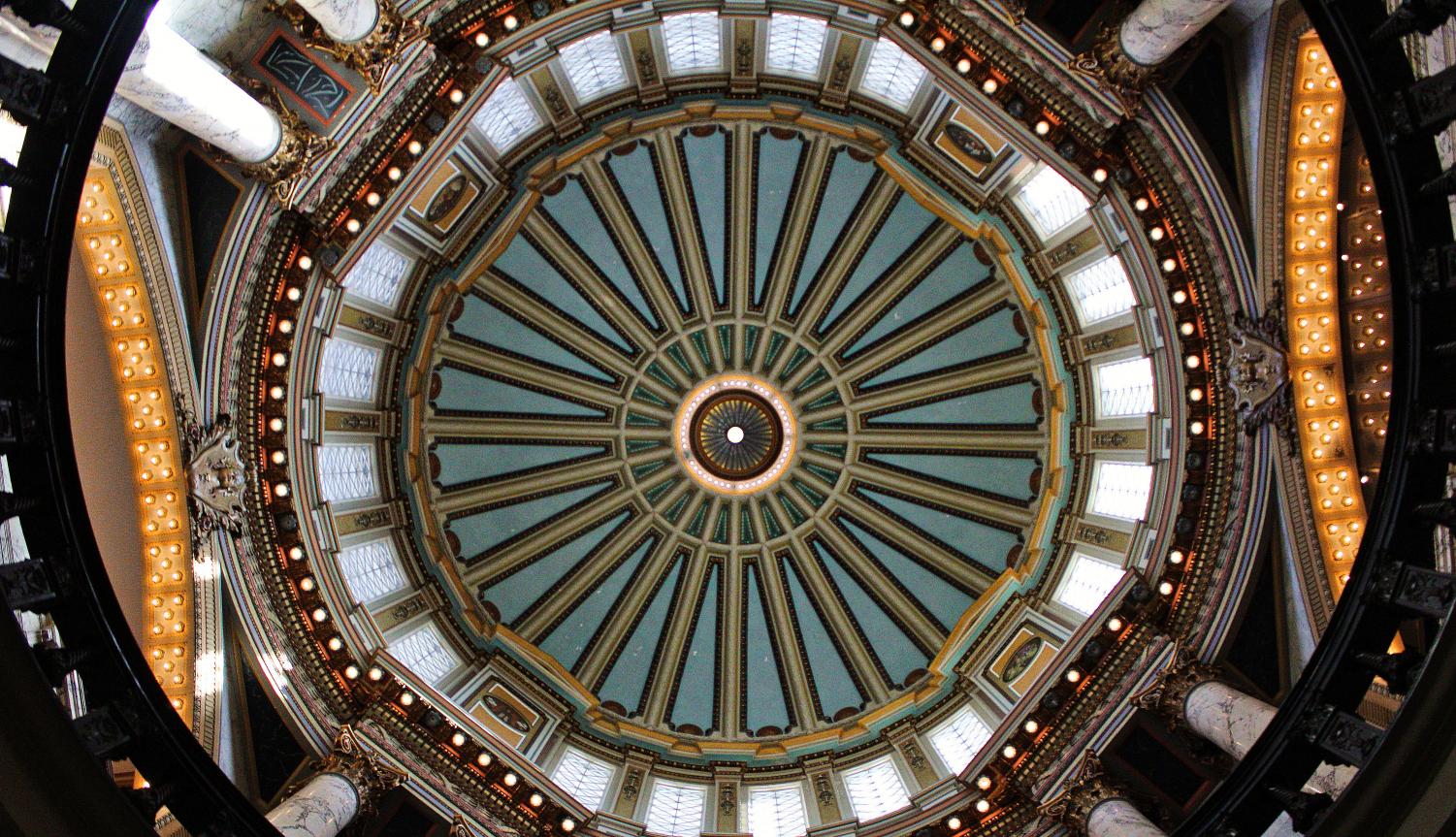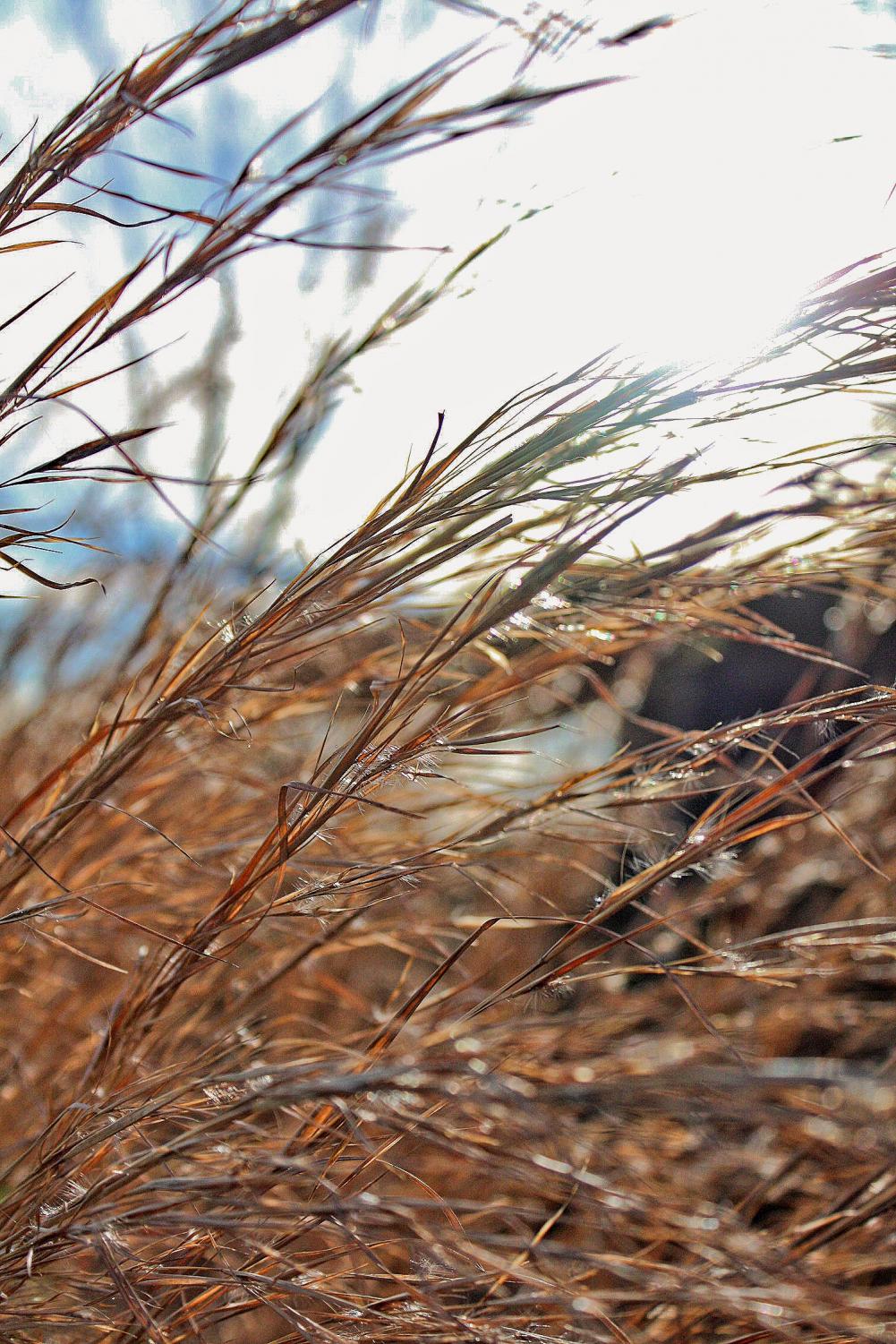Time is Fluid, a Research Paper DX
March 18, 2019
Editors Note: This article is a direct transcription of my University English research paper Director’s Cut style, with some additional side content and formatting. “EX” boxes are not necessary to understanding the basic concepts presented in this paper, but they are helpful for giving some more general context.
0) Human Perception and the Relativity of Time
Ted Chiang’s novella “The Story of Your Life” fundamentally challenges the common perceptions of time and free will through concepts grounded in linguistics and physics. Through the intentional mixing of verb tenses and plot beats with no correlation to linear chronology, Chiang creates an emphasis on the teleological aspects of the events of the story, rather than causal roots. Some of the complex ideas presented in the book are still in debate with philosophers today, two of which being the extent of the Sapir-Whorf Hypothesis and the relativity of nature around Fermat’s Principle of Least Time.
Starting off, to best understand the concepts that Chiang employs into his novel, there needs to be some groundwork established so the reader can get into the right mindset. The first question readers should ask is “What is the natural definition of time?”
According to Merriam Webster Dictionary, time is defined as “the measured or measurable period during which an action, process, or condition exists or continues” (Merriam Webster Dictionary, “Time”). Further definitions from the same source conclude a more chronological-based answer, such as “a nonspatial continuum that is measured in terms of events which succeed one another from past through present to future.”
These definitions may seem vague or extremely “wordy” because humans have socially created the construct of time. Physically, there is no definition of time because it is the mathematical difference in displacement over a difference of human perception.
Stated simply, people know that time has passed because they notice a small difference in our environment.
Since our perceptions are not uniform from person to person, time is fluid. Even clocks do not count out seconds, they count out recurrences of specific events, “Clocks work by counting a periodic event with a known frequency ”(Novick, A. Timekeeping and clocks FAQs).
Further adding to the argument that time is dependent on the person who defines it, are the numerous of stories about people describing a sense of timelessness in isolation tanks (Stevenson, S. “I Slept All Night in a Sensory Deprivation Tank. This is My Story.”).
With a deprivation of the senses, there is no difference in the environment to be perceived as a change in time, therefore proving that time is completely malleable to the perceptions of each and every human being.
With this inherent correlation between time and perception, there is now an argument that can be made that there is no distinct right or wrong way to acknowledge the flow of time, a concept that the novella takes and runs off with.

Time is much like water. Both can be defined as shaping to the construct that holds them. Like water following a river, or like time following perception.
i) “Story of Your Life” and Non-Chronological Storytelling
“I remember when you’ll be a month old… At that stage of your life, there’ll be no past or future for you; until I give you my breast, you’ll have no memory of contentment in the past nor expectation of relief in the future.
Once you begin nursing, everything will reverse, and all will be right with the world.
NOW is the only moment you perceive; you’ll live in the present tense.”
–(Page 32/40 Chiang, Ted, “The Story of Your Life”)
Throughout the course of the novella, Dr. Louise Banks helps the UN decode the language of alien life forms (Heptapods), but through the process begins to experience parts of the Sapir-Whorf Hypothesis. Due to this, there are two methods of telling time presented within the context of the overall story, one of them being the cyclic nature Heptapod interpretation (quote from up above), and the traditional timeline structure that describes the day by day process of Banks decrypting the logographic language the Heptapods employ.
She experiences both time interpretations simultaneously, as everything in the book has no definitive past or future, but it is all present. The easiest way to try to explain it would be in a graph.

Fig.1
The story, from a basic sense, follows Linguistic Specialist Dr. Louise Banks as she decodes the Heptapod Language, falling in love with coworker and Physicist major, Gary Donnelly and eventually conceiving a child. The rest of the book describes the life that Banks and her child have, right up until her child’s death from cancer. However, the major plot points are covered quite distinctly, (remember Banks is living through all of these events at the same time) since her child’s death from cancer is a primary motivation for Dr. Banks to conceive and spend as much time as possible with her. The plot becomes further ingrained when elements are used in both time interpretations.
For instance, while Dr. Banks and Gary Donnelly are called into a meeting to discuss the Heptapods wanting to give them a gift, the term, “non-zero-sum game” pops up, while also in the future her daughter asks Banks for help on an essay with finding a specific phrase for a relationship where all parties benefit. At the same time that she learns the phrase, she remembers it in the future and is able to tell “non zero sum game” to her child.
We sat in the video conference room, listening to him lecture. Our microphone was turned off, so Gary and I could exchange comments without interrupting Hossner.
As we listened, I worried that Gary might harm his vision, rolling his eyes so often…“You mean it’s a non-zero-sum game?” Gary said in mock incredulity. “Oh my gosh.”
************************
“A non-zero-sum game.” “What?” You’ll reverse course, heading back to your bedroom. “When both sides can win: I just remembered, it’s called a non-zero-sum game.” “That’s it!” you’ll say, writing it down on your notebook. “Thanks, Mom!”
-(Chiang, Pages 26,27/40)
By having integral parts of the plot interweaved in this manner, Chiang effectively takes away the traditional cause and effect nature of storytelling and instead emphasizes the teleological aspects, such as character motivations. By eliminating this linear construct of time, he doesn’t even define characters by their actions, but by their ability to communicate.
During the events of the story when Louise is discovering the roots of the Heptapods language, she makes and important distinction between communication to inform and communication with the sole intent to actuate or perform an action.
But language wasn’t only for communication: it was also a form of action. According to speech act theory, statements like “You’re under arrest,” “I christen this vessel,” or “I promise” were all performative: a speaker could perform the action only by uttering the words.
For such acts, knowing what would be said didn’t change anything. Everyone at a wedding anticipated the words “I now pronounce you husband and wife,” but until the minister actually said them, the ceremony didn’t count.
With performative language, saying equaled doing.
-(Chiang, Page 33/40)
With this distinction, the character motivations are placed front and center because Louise already knows of the future events to come, but she doesn’t actuate those events until she speaks performatively, showing that despite knowing the entire course of the journey including the hardships and the pain, she still chooses the same path for all of the precious moments with her daughter that she will/is having.
This is re-confirmed by Dr. Banks earlier in the plot when she speculates that by knowing the future, it may hasten an individual to comply with that future, even if knowing the future lies within direct contradiction of many free-will philosophies.
The existence of free will meant that we couldn’t know the future. And we knew free will existed because we had direct experience of it. Volition was an intrinsic part of consciousness.
Or was it?
What if the experience of knowing the future changed a person? What if it evoked a sense of urgency, a sense of obligation to act precisely as she knew she would?
-(Chiang, Page 29/40)
Other parallels are used to define intrinsic arcs in the story based on the miscommunication of the individuals, such as how Dr. Banks gives up on learning the mathematical language and Gary gives up on the linguistic sides of Heptapod B.
This conflict of communication is further examined when Gary divorces Louise because she decided to tell him (from his perspective the future) of their daughter’s death.
The communication plays a central role in advancing the plot forward, ultimately culminating in a story that is just as impactful interpreted linearly as in interpreted abstractly.

Many things in life exist as a cycle, or a circle. People can also construct time the same way.
ii) Linguistic Relativity: The Sapir-Whorf Hypothesis
The plot of “The Story of Your Life” is a metaphor, quite simply. When Dr. Banks begins to understand the language and script of Heptapod B, the narrative both structurally and metaphorically shifts to reflect the acquiescence of Sapir-Whorf Hypothesis. While the exact extent of the Sapir-Whorf Hypothesis is still debated by many psychologists and linguists, the basic effects are undeniable, as the structure of a language determines a native speaker’s perception and categorization of experience. (Carl, J. D., & Bélanger, M.. Think Sociology. Page 225)
According to an article by Stanford Encyclopedia of Philosophy, an example of Linguistic Relativity is summed up as the following:
Certain features of syntax or of the lexicon might exert a causal influence on certain aspects of visual perception (e.g., on which colors we can discriminate), classification (e.g., on how we sort things by their color), or long-term memory (e.g., on which differences among colors we remember most accurately) in clearly specifiable ways.
–(Swoyer, C. Supplement to Relativism).
Why use color?
Each culture had a different set of benchmarks to define where a certain color ended and where another color began. For instance, which shade defined “pink” in American English was socially different for what shade defined “rosado” in Spanish.
This method of testing individuals for the Sapir-Whorf Hypothesis became easy and efficient because it relied on Munsell color chips which were “a widely used, standardized set of chips of different colors” (Kay, P., & Kempton, W. (1984). What is the Sapir-Whorf hypothesis).
While this case is limited to just basic colors, it does prove that people rely upon their language to exert their shifted world view. To put it in a more dramatic (and exciting) example, according to a PowerPoint given on the exact procedures of testing by Paul Kay and Willett Kempton, he made the case that Linguistic Relativity meant that “Inuit can think more intelligently about snow because their language contains more sophisticated and subtle words distinguishing various forms of it, etc” (Kay, P., & Kempton, W. (1984). What is the Sapir-Whorf hypothesis).
So then, if a language can enable more “sophisticated thoughts” about a subject, what bars that cultural-based interpretation from defining time?
Theoretically, nothing.
Now how does this relate back to “The Story of Your Life”? The one key link is that there is already cyclic time interpretations in the Hopi Native American dialect that served as inspiration for the story.
From an American Indian Culture And Research Journal, a community Hopi community member spoke, “When you learn about Hopi, you learn about that balance between your responsibilities to yourself, your society, your whole world. That’s how Hopis think about it. This is passed through the language.”
-(Nicholas, S. 2010)
According to another 55-page research paper from a collaborative team consisting of Chris Sinha (University of Portsmouth), Vera da Silva Sinha (Portsmouth), Jörg Zinken (Portsmouth), and Wany Sampaio (Federal University of Rondônia), claims to have found significant evidence that the Hopi disregard the standard linear interpretation of time in favor of a more cyclic construction.
Whorf noted (in one of his unpublished and unfinished articles; Whorf, 1950: 27) a cultural-cognitive phenomenon in Hopi that bears directly on the topic of this article.
The Hopi speaker, he said, “―has no general notion or intuition of time as a smooth flowing continuum in which everything in the universe proceeds at an equal rate, out of a future, through a present, into a past; or, in which, to reverse the picture, the observer is being carried in the stream of duration continuously away from a past and into a future,”
-(Sinha, C., Sinha, V. D., Zinken, J., & Sampaio, W.
When Time is not Space: The social and linguistic construction of time intervals and temporal event relations in an Amazonian culture).
This sense of underlying motivation is reflected both in the Native American’s view of time as a cycle of growing seasons dictated by Nature and in “The Story of Your Life” where it’s linked to a “minimizing, maximizing purpose” closely related to variational principles in physics.

Light messes with our mathematical interpretation of time. It’s why we commonly use words like “Speed of Light” to describe it.
iii) Fermat’s Principle of Least Time
Now that there’s the background to support the concept of adopting a language and its consequences on consciousness, there needs to be a discussion on the physical principles behind “The Story of Your Life.”
Throughout the entire story, Chiang keeps referencing to a single principle in physics, Fermat’s Principle of Least Time. By stating that light already knows it’s endpoint during travel and that it will always choose an extreme path to reach that endpoint, that means that light will know the full extent of its journey before it even begins.
Gary put down the chalk and gestured at the diagram on the chalkboard with white-tipped fingers. “Any hypothetical path would require more time to traverse than the one actually taken.
In other words, the route that the light ray takes is always the fastest possible one. That’s Fermat’s Principle of Least Time,”
–(Chiang, Ted. Page 19/40).
Again, it’d be easiest to explain the full process behind Fermat’s Theorem it in a graph (much like how they explain it in the paid versions of the story).
So when light travels, the basic idea is that it will always choose the shortest path, or perhaps it would be more accurate to say the most “extreme path” from its beginning point (A) to its endpoint, (B).

Now if it were all just in one uniform body of element, this would be easy. Just draw a straight line (straight line in the diagram) and then that’s it, but it becomes more complicated and more interesting whenever there is a body of refraction or a change in the properties of the body that light travels through.
If for instance, light’s goal was to reach a point at the bottom of a lake and it started from in the sky, the path that would take the least amount of time would change. Light travels slower through water than it does through air, and so it would take the path that adjusts slightly so the ratio of distance spent in the air is higher than the distance traveled in the water (bent lines in the diagram) (Carlip, S., & Gibbs, P. 1997 Is the Speed of Light Everywhere the Same?).
Another example is from Virginia Galileo and Einstein Physics which states the following analogy:
Feynman gives a nice illustration: a lifeguard on a beach spots a swimmer in trouble some distance away, in a diagonal direction. He can run three times faster than he can swim. What is the quickest path to the swimmer?
–(Fowler, M. Fermat’s Principle of Least Time)

“On the Nature of Daylight” is an orchestral piece composed by Max Richter, and played during Arrival to emphasize the emotional impacts of the teleological aspects of the story.
While that graph is comparatively simple to the math running in the background, an important key detail shouldn’t be forgotten. There are infinitely many possible paths for light to travel through to get from its starting point to its ending point, but yet despite the infinite possibilities, it doesn’t fail at reaching its goal in the quickest/longest time possible, which means: It evaluates all of the paths before it begins and knows which path of those available will be the shortest.
It’s this definition that breaks the traditional concepts of time. If light understands the entire path enough to evaluate which one will be quickest/slowest before it begins, then is time linear or cyclic? Is it learning from failures of the future that it’s living through to currently to choose the right path in the present?
The “Story of Your Life” answers that question in this way:
In contrast, the physical attributes that the Heptapods found intuitive, like “action” or those other things defined by integrals, were meaningful only over a period of time.
And these were conductive to a teleological interpretation of events: by viewing events over a period of time, one recognized that there was a requirement that had to be satisfied, a goal of minimizing or maximizing.
And one had to know the initial and final states to meet that goal; one needed knowledge of the effects before the causes could be initiated.
–(Chiang, Ted. Page 28/40)
By this sophisticated incorporation of real world physics concepts, Chiang successfully creates a world hypothetical enough to be just out of reach, yet grounded by many of the same laws that govern Earth today.
With the amalgamation of linguistics concepts, Chiang also makes the case that perspective on the world is heavily linked to the immersion of a culture that a person finds themselves in.
And finally, together, Chiang merges the two interpretations of the world, linguistic and mathematical, to create a piece of literature that challenges the human sociological construct of time.
Bibliography:
(Page 32/40) Chiang, T., & McMurray, J. (2018). Stories of your life and others. Burton, MI: Subterranean Press. (https://fyp.uoregon.edu/sites/fyp2.uoregon.edu/files/story_of_your_life_2.pdf)
Carl, J. D., & Bélanger, M. (2015). Think sociology. Toronto, Ontario: Pearson Canada.
Carlip, S., & Gibbs, P. (1997). Is The Speed of Light Everywhere the Same? Retrieved March 3, 2019, from http://math.ucr.edu/home/baez/physics/Relativity/SpeedOfLight/speed_of_light.html
Fowler, M. (2015, Fall). 3. Fermat’s Principle of Least Time. Retrieved March 5, 2019, from http://galileoandeinstein.physics.virginia.edu/7010/CM_03_FermatLeastTime.html
Kay, P., & Kempton, W. (1984). What is the Sapir-Whorf hypothesis?[PDF].
Novick, A. (2018, May 23). Timekeeping and clocks FAQs. Retrieved February 2/28, 2019, from https://www.nist.gov/pml/time-and-frequency-division/timekeeping-and-clocks-faqs
Nicholas, S. (2010). Language, Epistemology, and Cultural Identity:”Hopiqatsit Aw Unangvakiwyungwa”(“They Have Their Heart in the Hopi Way of Life”). American Indian Culture and Research Journal,34(2), 125-144. doi:10.17953/aicr.34.2.2241355780153270
Page 26,27,29, and 33/40, “The Story of Your Life” By Ted Chiang
Sinha, C., Sinha, V. D., Zinken, J., & Sampaio, W. (2011, September 12). When Time is not Space: The social and linguistic construction of time intervals and temporal event relations in an Amazonian culture.[PDF]. University of Portsmouth and Federal University of Rondonia.
Stevenson, S., & Stevenson, S. (2015, November 23). I Slept All Night in a Sensory Deprivation Tank. This Is My Story. Retrieved February 2/28, 2019, from https://slate.com/human-interest/2015/11/i-slept-all-night-in-a-sensory-deprivation-tank.html
Swoyer, C. (2003). The Linguistic Relativity Hypothesis (Supplement to Relativism). Retrieved February 2/29, 2019, from https://stanford.library.sydney.edu.au/archives/spr2015/entries/relativism/supplement2.html
Time. (n.d.). Retrieved February 2/28, 2019, from https://www.merriam-webster.com/dictionary/time
—————————————————————
